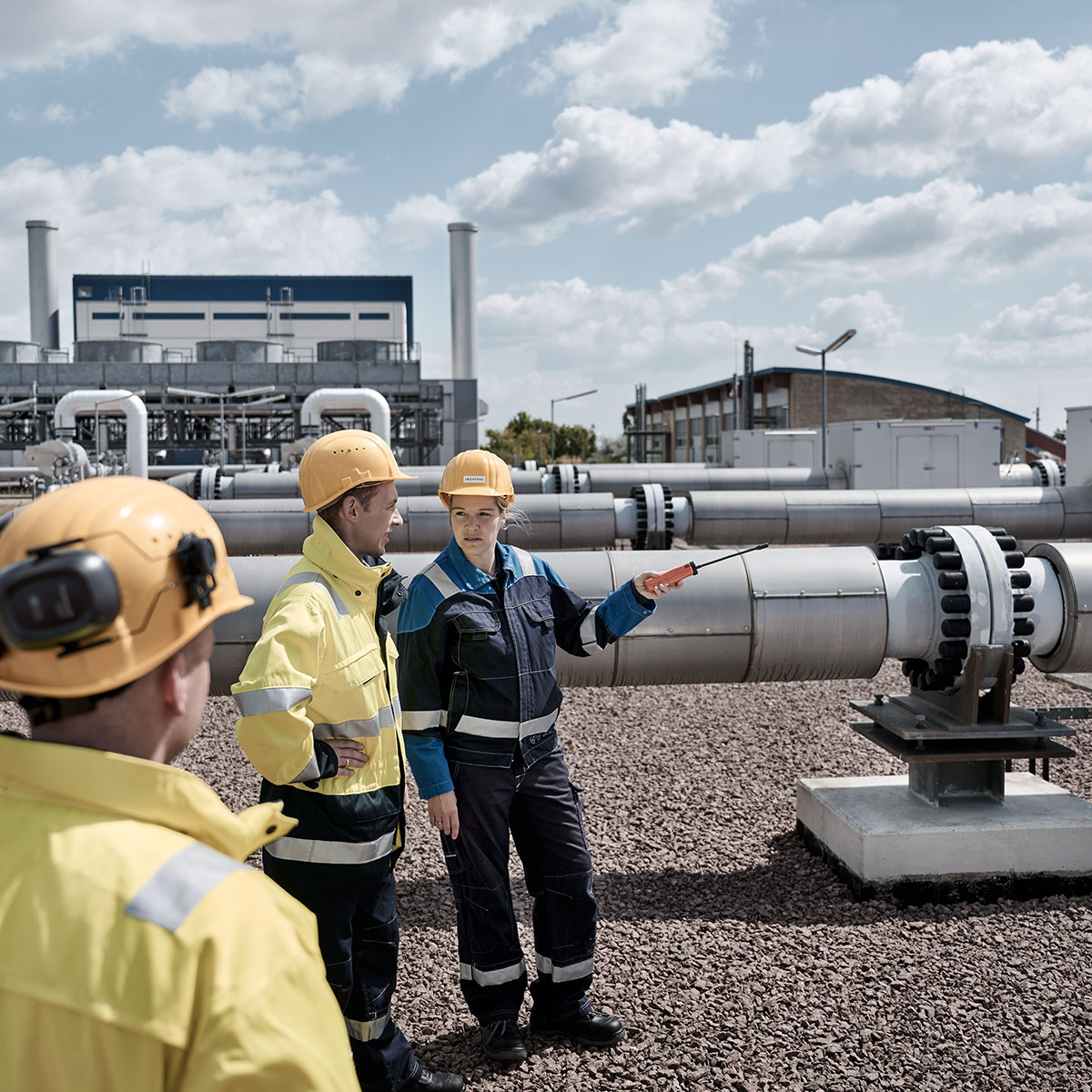Hydrogen potential
A region with potential
The eastern German federal states meet all the criteria and also boast all the advantages of a hydrogen region: strong wind in the north, undeveloped potential land for photovoltaic and electrolysis facilities, established, capable infrastructure of import and transit pipelines and gas storage facilities as well as a range of different applications – initially industrial but with strong prospects in the heat and mobility sectors.

The east has wind, sun and space for hydrogen
The eastern German federal states of Mecklenburg-Vorpommern, Brandenburg, Berlin, Saxony, Saxony-Anhalt and Thuringia offer huge potential for a bundled green hydrogen economy. The windswept Baltic Sea has the potential to supply up to 15,000 MW of installed power for Germany through offshore projects in the near future. But the eastern part of the country also offers development and space capacities for parts of the estimated 600 GW of required installed PV power by 2030 for Germany as a whole. Estimates suggest that Eastern Germany has the potential to generate around 246 TWh of green electricity. Green electricity that can also be converted into green hydrogen close to its production location through electrolysis.

Eastern German infrastructure is H2-ready
The transportation of green hydrogen produced in/imported to Germany to consumers requires functioning infrastructure. The eastern German gas network provides tried-and-tested infrastructure that meets the technical requirements for hydrogen transport and enables a cost-effective switch to hydrogen. A study by the DVGW (Deutscher Verein des Gas- und Wasserfaches e.V.) showed that only individual components and station elements need to be upgraded or replaced. And storage capacities are also ensured with a total of five locations.
Achieving transformation in the region
Whether the steel industry in Brandenburg, the chemical triangle in Saxony or refineries in Saxony-Anhalt, Eastern Germany is home to a range of energy-intensive industries that cannot be electrified. Looking forward, they all require green hydrogen in order to maintain production and meet their climate policy requirements. At the same time, future decarbonised power stations operated with hydrogen can make a significant contribution to security of supply. This will support a successful transformation and structural change – and establish the foundation for an environmentally and economically sustainable region in Eastern Germany.